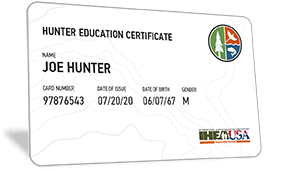
AGE REQUIREMENTS FOR NEBRASKA HUNTERS
Every hunter in Nebraska who is 12-29 years of age is required to complete Hunter Education Certification. You must be 11 years of age or older to get certified.

NEBRASKA HUNTING EDUCATION REQUIREMENTS
WHAT IS A NEBRASKA HUNTER EDUCATION CERTIFICATE
A Nebraska Hunter Education Certificate proves that you’ve obtained the knowledge needed to hunt safely, responsibly, and ethically, within the state of Nebraska. Any person 12-29 years of age, who hunts within the state of Nebraska, must obtain a hunter education certificate. Hunters must carry the certificate with them at all times, while in possession of a firearm or airgun.
WHERE CAN I GET MY NEBRASKA HUNTER EDUCATION CERTIFICATE?
You can obtain your Nebraska Hunter Education Card by completing a Nebraska Game and Parks Commission-approved course. Courses can be taken either online or in-person, depending on your preference.
In-Person (Classroom) Course Option
Traditional classroom courses are recommended for youth or novice hunters who require hands-on training from a skilled instructor.
Online Course:
Hunters can obtain their Hunter Education Course entirely online if they choose. Online courses typically take about 4-6 hours to complete. Students are issued a temporary Hunter Education Certificate upon completion.
HOW OLD DO I HAVE TO BE TO GET A HUNTER EDUCATION CERTIFICATE IN NEBRASKA?
You must be 11 years of age or older to complete hunter education certification in Nebraska, and obtain your Hunter Education Certificate.
AGE AND SUPERVISION REQUIREMENTS
Hunters who are 11 years of age or less are not required to obtain hunter education certification however, they are permitted to hunt as long as they are supervised by a hunter who is 19 years of age or older.
Hunters who are 12-15 years of age must obtain a hunter education certificate to hunt within the state and must be accompanied by a hunter who is 19 years of age or older.
The supervising hunter must have obtained hunter education certification if required.
HOW LONG DOES IT TAKE TO GET MY HUNTER EDUCATION CARD?
It typically takes about 4-6 hours to get your Nebraska Hunter Education Certificate online. In-person course lengths may vary depending on the course type and instructor.
Who is exempt from having to obtain a Nebraska Hunter Education Certificate?
- Hunters who are 30 years of age or older
- Hunters who are 12 years of age or older who possess an Apprentice Hunter Education Exemption Certificate
What is a apprentice hunter education exemption certificate?
Hunters who are 12-29 years of age, may forgo obtaining hunter education certificate or bowhunter education certificate by obtaining an Apprentice Hunter Education Exemption Certificate. The certificate may be purchased once in a hunters lifetime, and expires December 31st of each year. The license may be renewed once to complete a full calendar year.
Hunters who obtain a Hunter Education Exemption Certificate must be accompanied by a licensed hunter who is 19 years of age or older. If the supervising hunter is 12-29 years of age they must be properly certified with the appropriate hunter certification.
Is my Nebraska Hunter Education Certificate valid in other states?
Yes. The Nebraska Hunter Education Certificate is accepted in all states, provinces, and countries that have mandatory hunter education requirements. Although most regions will accept the Nebraska Hunter Education Certificate, hunters should always be sure to check the rules and regulations of the region where they plan to hunt.
What's the difference between a Hunter Education Certificate and a Hunting License?
A Hunter Education Card proves that you’ve obtained the knowledge you need to hunt safely and ethically in Nebraska, and is different from a Hunting License. The Hunting Licence is similar to a permit and is required to hunt any game animal within the state. Different licenses and permits may be required depending on which game animal is being hunted.

HUNTING LICENSES, STAMPS, AND PERMITS
HUNTING LICENSES
A Hunting License or Permit is required in the state of Nebraska to hunt any game animal. There are a variety of permit and stamp types available depending on your age, residency status, and what type of game you plan to hunt. Some of the hunting license types in Nebraska include:
Annual Hunt Permit
This permit type is valid from January 1st – December 32st of the year it’s purchased. It is required for all residents of Nebraska, who are 16 years of age or older in order to hunt or possess any upland game, rabbits, squirrels, doves, waterfowl, and webless migratory birds.
Various types of annual hunt permits are available, including resident and non-residents permits, seniors or veterans permits, and fish-hunt combo permits.
Deer Permits
Deer permits are required for all residents of Nebraska who are 16 years of age or older, to hunt deer within the state. Various deer permit types may be required depending on the hunter’s age and residency status. Additional stamps may also be required.
Elk Permits
Elk permits are required for all residents of Nebraska who are 16 years of age or older, to hunt Elk within the state. Various elk permit types may be required depending on the hunter’s age and residency status. Additional stamps may also be required.
NEBRASKA HUNTER CERTIFICATION AGE REQUIREMENTS

11 years of age or less
Hunters who are 11 years of age or less are not required to obtain a Hunter Education Certificate however, they are permitted to hunt as long as they are under the direct supervision of an adult who is 19 years of age or older. The supervising adult but have obtained a Hunter Education Certificate if they are required to do so.

12-15 years of age
Hunters who are 12-15 years of age must obtain a Hunter Education Certificate to hunt within the state of Nebraska. Hunters within this age group must also be supervised while hunting by an adult who is 19 years of age or older. The supervising hunter must have obtained their Hunter Education Certificate if required.

12-29 years of age
Hunters who are 12-29 years of age are required to obtain hunter education certification in order to hunt within the state of Nebraska. Hunters must carry the certificate with them at all times, while in possession of a firearm or airgun.
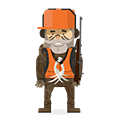
EXCEPTIONS
- Hunters who are 30 years of age or older
- Hunters who are 12 years of age or older who possess an Apprentice Hunter Education Exemption Certificate

Nebraska's Hunting Fines

Hunting without a license or permit
Up to $500

Bag Limit Violations
Up to $500

Illegal possession of a game animal during closed season
Up to $1,000

Unlawful entry into a permit area
Up to $500

Hunter Orange Violations
Up to $500
NEBRASKA HUNTING FAQS
DO I NEED A HUNTING LICENSE TO HUNT WITHIN THE STATE OF NEBRASKA?
Yes. A Hunting License is different from a Hunter Education Certificate and is required for any person, of any age who hunts any animal within the state of Nebraska. This includes both residents and non-residents. Varying licenses must be purchased and carried depending on the hunter’s age, residency, and the type of game being hunted. Certain exceptions may apply depending on the game animal being hunted. For more information on Nebraska hunting licenses, visit the Nebraska Game and Parks.
WHAT ARE THE NEBRASKA TAGGING REQUIREMENTS?
Certain game animals may need to be tagged and/or reported after they’re taken, including game animals such as deer, elk, antelope, and turkey. It’s important for hunters to understand the tagging and/or harvest reporting requirements for the game animal they’re hunting, and to ensure that the animal is tagged and reported properly.
Checking Deer, Antelope, and Elk
Deer, antelope, and elk harvest reporting is mandatory in Nebraska. The harvest must be reported before the carcass of the game animal may leave the state. Hunters are not permitted to separate the carcass of the game animal into sections smaller than quarters until the animal has been reported at a check station – all portions of meat and the animal’s head must be presented at the check station.
Check station requirements apply to all deer harvested during the November firearms season, antelope harvest during the October firearms season, and all elk. The game animal being “checked” but be presented as a designated check station within a minimum time period after being taken. This minimum time period may vary depending on the game animal. To find a check station visit OutdoorNebraska.org
WHAT ARE THE HUNTER ORANGE REQUIREMENTS IN NEBRASKA?
Hunter orange must be worn by any person hunting elk, pronghorn antelope, bighorn sheep, or deer with a firearm during the designated firearm seasons. The hunter orange must be worn on the hunters head, chest and back, and must include a minimum of 400 square inches of hunter orange material.
These requirements also apply during the muzzleloader season, and during the archery season when it overlaps with the deer firearm season in November and in January.
WHAT ARE THE BAG LIMITS IN NEBRASKA?
Bag limits are imposed on hunters to restrict the number of a particular game animal that can be taken. Bag limits may be daily or seasonal depending on the type of animal. Daily bag limits restrict the number of a particular game animal that may be taken within a hunting day, while seasonal bag limits restrict the number of a particular game animal that may be taken by a hunter within the hunting season.
Bag limits may vary annually depending on game species populations. Hunters must understand and follow bag limit restrictions. Violations may result in fines. For more information on bag limits visit the Nebraska Game & Parks Website.
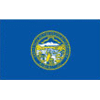
GAME AND NON-GAME SPECIES
GAME SPECIES
Nebraska offers a wide variety of game species for all types of hunters. The state offers diverse habitats and landscapes, and a wide variety of game species available for hunters including more exotic species types such as bighorn sheep and pronghorn antelope.
Game species in Nebraska are categorized as follows:
- Big game including deer, elk, turkey, pronghorn antelope, and bighorn sheep
- Small game including partridge, dove, quail, American crow, rabbit and squirrel
- Waterfowl and other migratory game birds including multiple species of ducks and geese
- Furbearers including beaver, muskrat, bobcat, raccoon, skunk, coyotes, and woodchuck.
- Mountain Lions
NON-GAME SPECIES
Nongame species in the state of Nebraska typically include mammals, birds, fish, reptiles, amphibians, and invertebrates which typically may not be hunted, are considered a nuisance, or are protected, endangered, or at risk. There is, unfortunately, a lengthy list of endangered, protected, and threatened species within the state including southern flying squirrel, river otter, black-footed ferret, and whooping crane, among others. For more information on nongame, and endangered species within the state visit the Nebraska Game and Parks website
INVASIVE SPECIES
Invasive animals and other pests have been introduced to the United States, including the State of Nebraska, and have become a threat to native wildlife. These animals, plants, fish, and invertebrates typically have no natural predators which can result in rapid spread and population growth. This in turn can seriously harm the state’s lands and waters, and can be detrimental to the health and population numbers of a variety of the state’s native plants and animals. Some common invasive species in Nebraska include the brown rat, Eurasian dove, European staring, in addition to various types of aquatic plants, terrestrial plants, mammals such as the Feral Hog – one of the most destructive and notable pests within the state.
In order to protect Nebraska’s native plants and animals, invasive species must be controlled and eradicated. Anyone who encounters or suspects that they have encountered an invasive species within the state is encouraged to report the sighting so that it can be monitored and controlled. For information on how to report various types of invasive species in Nebraska neinvasives.com

NEBRASKA HUNTING SEASONS
Hunting seasons and dates may change annually per game animal, depending on a variety of factors. Season dates are further broken out, region or units. Additionally, seasons are often categorized by firearm time, including archery, firearms, and muzzleloader or “primitive” firearms seasons.
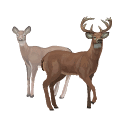
Deer
Deer seasons in Nebraska are organized by firearm type, with the earliest season beginning in September (Archery), ending with the late antlerless season ending in January of the following year. Hunters must obtain a permit to take deer within the state. Permits are initially issued by a draw, followed by the opportunity for hunters to purchase remaining permits once the draw is complete.
Learn more about hunting deer in Nebraska.
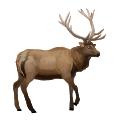
Elk
Elk seasons in Nebraska are organized by firearm type, and by “zone”. The season typically opens in September, with the archery-bull season, and ends in January of the following year with the antlerless season. Elk permits are required to take elk within the state. Permits may be issued by draw.
Learn more about hunting elk in Nebraska
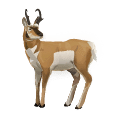
Pronghorn
Pronghorn seasons in Nebraska are organized by firearm type and by units. The season typically begins in August, with archery season, and ends in January of the following year with a late doe/fawn season. Permits are required to hunt pronghorn antelope within the state. Some permits may be issued by draw, depending on the unit.
Learn more about hunting pronghorn in Nebraska.
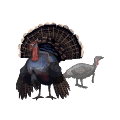
Turkey
Turkey seasons in Nebraska are organized by firearm type, and include both spring and fall seasons. Spring season typically begins in March and ends in May, while the fall season begins in September and ends in January of the following year. Hunters must obtain a turkey permit in order to take turkey within the state.
HUNTING ON PUBLIC OR PRIVATE LAND
PRIVATE LAND
Much of the land in Nebraska is privately owned. Hunters can typically freely take game animals hunted on their own private property, or may seek permission from a landowner to hunt on private property. Hunters who wish to take game on privately owned land must follow state hunting regulations as well as any regulations specified by the landowner. Hunters must ensure they respect the rights and property of the landowner at all times. Trespassing on private land is Nebraska is prohibited.
PUBLIC LAND
There are nearly 800,000 acres of public land within the state of Nebraska, much of which is open to hunting. Nearly 50,000 acres of public land-space was purchased by the state as a direct result of the Nebraska Habitat SStamp program, meaning it wouldn’t be accessible to hunters without their contributions to the program.
While public land space in Nebraska encompasses only 2% of the state’s total land access, there’s still no shortage of hunting space. Public lands that may be accessible to hunters within the state include Wildlife Management Areas (WMAs), State Parks and Recreation Areas, National Forests, Federal Reservoirs, and Waterfowl Production Areas. To find a land-space open to hunting near you, use the Nebraska Public Access Interactive Atlas.
OPEN FIELDS AND WATERS PROGRAM
The Open Fields and Waters program aids in increasing hunting and fishing participating within the state of Nebraska by partnering with private landowners across the state. The program offers financial incentives to private landowners who open their lands to public use for hunters and anglers.
The program also provides landowners with the opportunity to work with Game and Parks biologists and improve wildlife habitats across the state. So far, the program has resulted in more than 340,000 acres of land access for hunters.
To learn more about the Open Fields and Waters Program, and to learn how to participate, visit the Nebraska Game and Parks Website.
Wildlife Management Areas
What Are Wildlife Management Areas?
Wildlife Management Areas are lands that are managed by the Nebraska Game and Parks Commission Wildlife Division. These designated spaces are designated for the enhancements of wildlife habitats, public hunting, and trapping, and fishing however, they are also open for multiple types of recreational outdoor use including hiking, camping, and wildlife watching.
Funding for these lands comes directly from hunters as a result of Habitats Stamp purchases, hunting permits, fishing permits, and excise taxes from hunting and fishing equipment purchases.
WMA Regulations
While access to these spaces is free, and an entry permit is not required, specific rules and regulations may apply within WMAs including restrictions on:
- Camping space and equipment size
- Dog training for hunting purposes
- Fireworks
- Motor vehicle access
- Set-up of hunting blinds and fishing shelters
- Alcohol consumption
WMA Permits
Hunters are not required to obtain a permit to access or hunt within Wildlife Management Areas however, they must ensure that they possess the required game permits and habitat stamps to take game within the state.
The Cornhusker State. Ready and rarin’ to go.

Where to Hunt in Nebraska
Nebraska’s endless wheat and cornfields, expansive grasslands, plains, and forested valleys are breathtaking – and hiding amongst these luscious landscapes and habitats are a plethora of game animals. In fact, Nebraska may be one of America’s best-kept secrets when it comes to hunting.
The state’s game animals are numerous and offer hunters an opportunity to track and take wildlife that isn’t present in many states including mountain lion, bighorn sheep, and pronghorn antelope. On top of the enumerable game species, there are also hundreds of thousands of acres of natural space to hunt them on.
When planning a Nebraskan hunting trip, hunters will want to focus their search based on the type of game they’re planning to hunt. Those in search of pronghorn should set their sights on Northwestern Nebraska including the Oglala National Grasslands and surrounding counties. For bighorn sheep, hunters should stray south towards Scottsbluff County and the Montz Point Wildlife Management Area.
If you’re in search of deer (monster buck in particular), head towards the Republican River in the South-central part of the state. There are several Open Fields and Waters lands within the area of Harlan County that are open to hunting and are home to good quality deer populations.